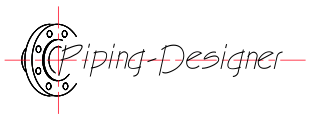Universal Soil Loss
Universal Soil Loss formula |
||
|
\( A \;=\; R \cdot K \cdot LS \cdot C \cdot P \) (Universal Soil Loss) \( R \;=\; \dfrac{ A }{ K \cdot LS \cdot C \cdot P }\) \( K \;=\; \dfrac{ A }{ R \cdot LS \cdot C \cdot P }\) \( LS \;=\; \dfrac{ A }{ R \cdot K \cdot C \cdot P }\) \( C \;=\; \dfrac{ A }{ R \cdot K \cdot LS \cdot P }\) \( P \;=\; \dfrac{ A }{ R \cdot K \cdot LS \cdot C }\) |
||
| Symbol | English | Metric |
| \( A \) = Annual Soil Loss | \( tons\; ac \; yr\) | \(Mg \; ha^{-1} \; yr^{-1}\) |
| \( R \) = Rainfall Erosivity Factor | \(100 \;ft \;tonf \; in \;/\; ac \;hr\; yr\) | \(MJ \; mm \;/\; ha \; h \; yr\) |
| \( K \) = Soil Erodibility Factor | \(tons\; ac\;hr \;/\; ac\; ft \;tonf\; in\) | \(Mg \; ha\;hr \;/\; MJ \; mm \; ha \) |
| \( LS \) = Slope Length and Steepness Factor (Topographic Factor) | \(dimensionless\) | \(dimensionless\) |
| \( C \) = Cover Management Factor | \(dimensionless\) | \(dimensionless\) |
| \( P \) = Support Practice Factor | \(dimensionless\) | \(dimensionless\) |
Universal soil loss equation, abbreviated as USLE, also called annual soil loss, is a model used to predict the average annual soil loss due to sheet and rill erosion from agricultural land. It is an empirical model designed to estimate the long-term average annual rate of soil erosion due to sheet and rill erosion from specific field slopes under defined conditions. It does not predict soil loss from gully, wind, or tillage erosion, nor does it account for sediment deposition.
The USLE is a multiplicative model, meaning the annual soil loss is the product of these five factors. It's a valuable tool in agriculture and conservation planning for comparing soil erosion rates under different management practices and for predicting the potential impact of land-use changes. While the R and K factors are inherent to a location and soil type and cannot be altered, the C and P factors can be managed through different agricultural and conservation practices to reduce soil loss. The LS factor is determined by the topography of the land.
- A - The estimated long-term average annual soil loss, typically expressed in tons per acre per year or tonnes per hectare per year.
- R - The rainfall and runoff factor, which quantifies the erosive force of rainfall based on intensity and duration. Higher intensity and longer duration storms result in a higher R factor and greater erosion potential.
- K - The soil erodibility factor, indicating the susceptibility of soil particles to detachment and transport by rainfall and runoff. Soil texture is the primary influence, but structure, organic matter content, and permeability also play a role.
- LS - The slope length and steepness factor (also known as the topographic factor). It represents the effect of slope length (L) and slope steepness (S) on soil erosion. Longer and steeper slopes lead to a higher LS factor and increased erosion.
- C - The cover-management factor, which reflects the impact of vegetation cover and management practices on reducing soil erosion. It is a ratio comparing soil loss under specific crop and tillage systems to that from continuously fallow and tilled land.
- P - The support practice factor, which accounts for the effects of conservation practices that reduce runoff and erosion, such as contour farming, strip-cropping, and terracing. It is the ratio of soil loss with a specific support practice to that of straight-row farming up and down the slope.

